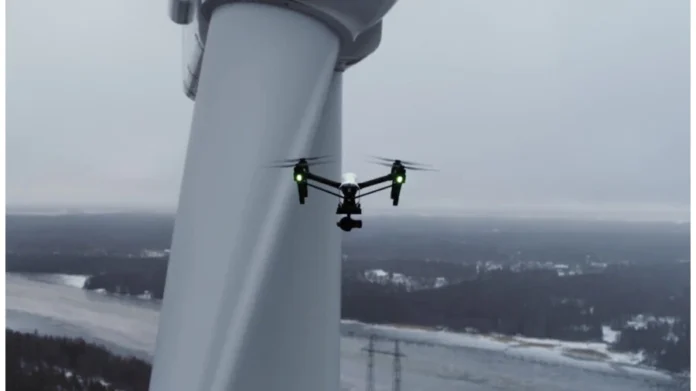The goal was to analyze 5G network connectivity and speed date in the air and compare it to results captured on ground level
US Cellular and Ericsson have begun testing the performance of the carrier’s 5G network at altitude using drone technology. The trials, which were supported by the Ericsson Connected Drone Testing and Ericsson Device Analytics, involved flying a drone outfitted with a 5G smartphone and RF measurement equipment between two of US Cellular’s commercial 5G towers in Beloit, Wisconsin.
The goal was to obtain and analyze 5G network connectivity and speed data in the air, compare it to results captured on ground level and “ultimately understand what is required for the future use and success of 5G connected drones.” Once in the sky, the equipment attached to the drone gathered performance metrics such as signal strength and quality, upload and download speeds and latency throughout at various altitudes. This data was gathered using both low and high band spectrum, said the companies.
“Testing our wireless connections at altitude can set the stage for future connectivity of drones in the air, providing command and control capability along with enabling real-time image and data sharing to be easier, faster and safer,” said Narothum Saxena, vice president of technology strategy and architecture at US Cellular. “We believe that our network can help drones fly in an optimal way if they have connectivity, and with Ericsson’s support, we will continue to drive innovation that can help enhance our customers’ wireless experience.”
The press release implied that US Cellular — and other operators — had several potential uses for drones but singled out the ability to conduct tower inspections without having to send up a climber. Such an application, the release continued, can easily extend to other industries, such as farming, for example. In this case, a farmer would be able to inspect the top of a barn or a silo easily and safely from the ground.
While such tasks can already be performed with non-connected drones, the companies argued that the introduction of 5G will allow a drone to reach areas beyond the visual line of sight of the pilot. Further, 5G’s low-latency connectivity will make it possible for the drone to transmit a livestream of what it is capturing. “This means site inspections become much more efficient and cost-effective, with benefits such as real-time data collection and delivery and ensuring the right footage is captured, especially in hard-to-reach areas,” the release stated.
“Drone technology offers a wide scope of new opportunities in today’s market. Our testing with [US Cellular] is a huge step for advanced connected drones use cases that will benefit society and businesses,” said Jossie Prochilo, vice president and key account manager, US Cellular Account for Ericsson North America.

